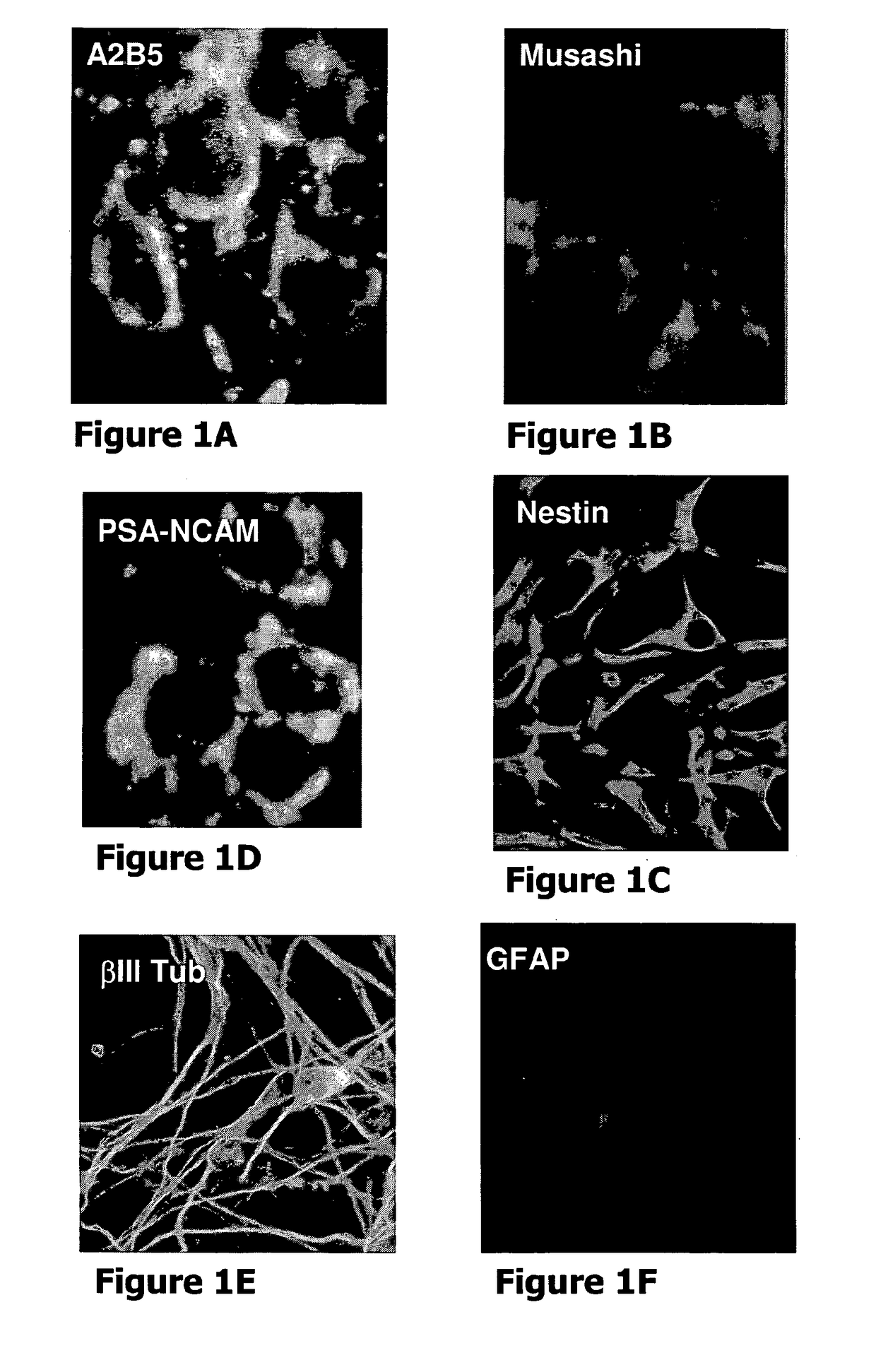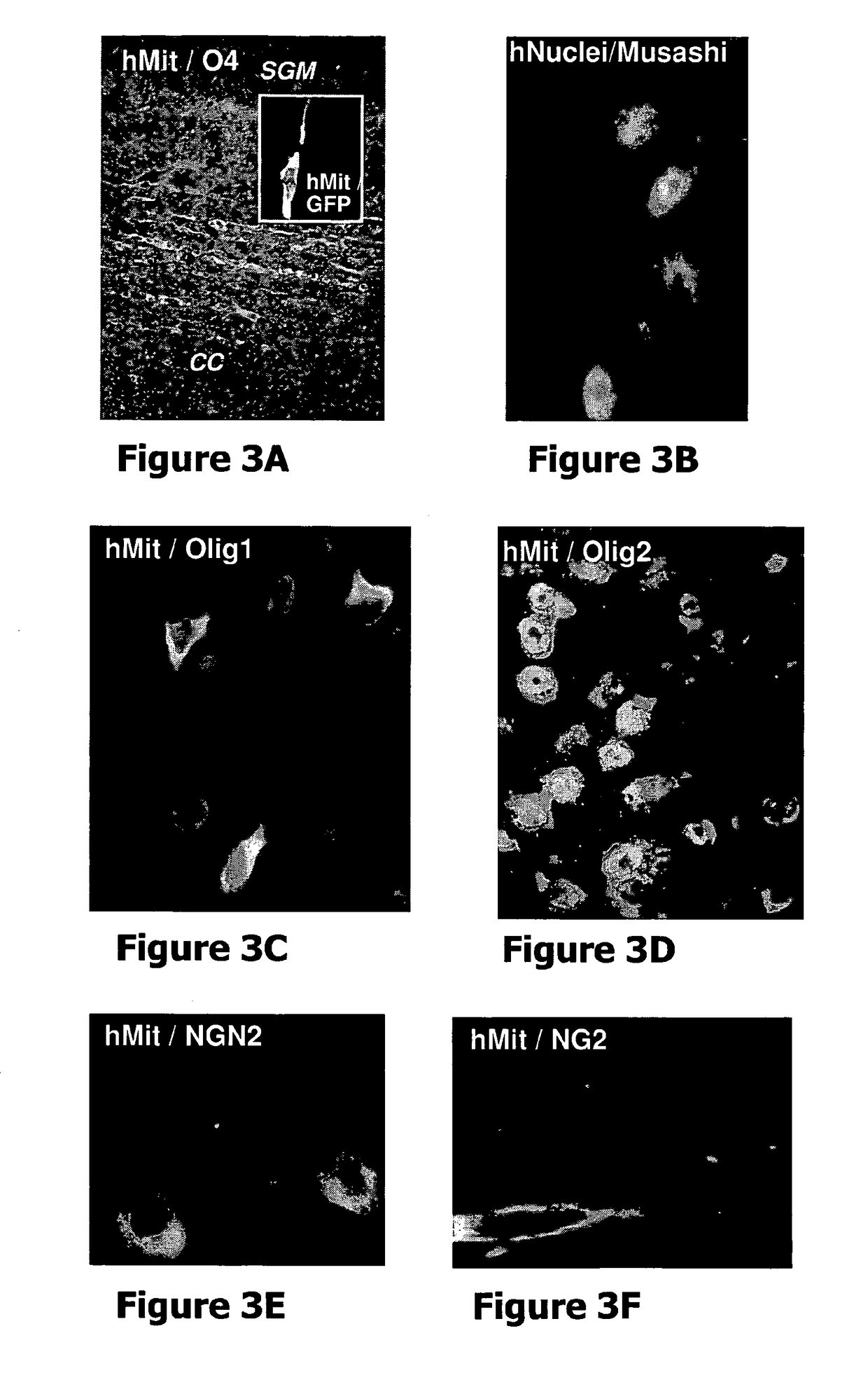Human stem cell-derived neural precursors for treatment of autoimmune diseases of the central nervous system
a technology of neural precursors and stem cells, applied in the field of cell therapy, can solve problems such as the end of the myelination process
- Summary
- Abstract
- Description
- Claims
- Application Information
AI Technical Summary
Benefits of technology
Problems solved by technology
Method used
Image
Examples
Embodiment Construction
[0049]The present invention stems from a sequence of empiric findings by the inventors which led to the development of novel methods and products as detailed below. Specifically, empiric data was collected concerning the effect of neural precursors derived from human embryonic stem cells (hESCs) on a chronic model of multiple sclerosis (MS), namely, EAE.
[0050]MS is the prototype of several related immune-mediated CNS diseases that are relevant to the present disclosure. The pathological process of many CNS-associated immune diseases, such as MS, involves immune cell infiltrations, oligodendrocyte death, demyelination and axonal damage. Thus, it has been envisaged by the inventors that there would be a therapeutic benefit if conditionsthat contribute to both the process of remyelination and immunosuppression are provided. Moreover, it has been envisaged by the inventors that it would be especially advantageous to deliver the effect in a targeted fashion to the involved tissue, namely...
PUM
| Property | Measurement | Unit |
|---|---|---|
| temperature | aaaaa | aaaaa |
| concentration | aaaaa | aaaaa |
| purity | aaaaa | aaaaa |
Abstract
Description
Claims
Application Information
 Login to View More
Login to View More - R&D
- Intellectual Property
- Life Sciences
- Materials
- Tech Scout
- Unparalleled Data Quality
- Higher Quality Content
- 60% Fewer Hallucinations
Browse by: Latest US Patents, China's latest patents, Technical Efficacy Thesaurus, Application Domain, Technology Topic, Popular Technical Reports.
© 2025 PatSnap. All rights reserved.Legal|Privacy policy|Modern Slavery Act Transparency Statement|Sitemap|About US| Contact US: help@patsnap.com



